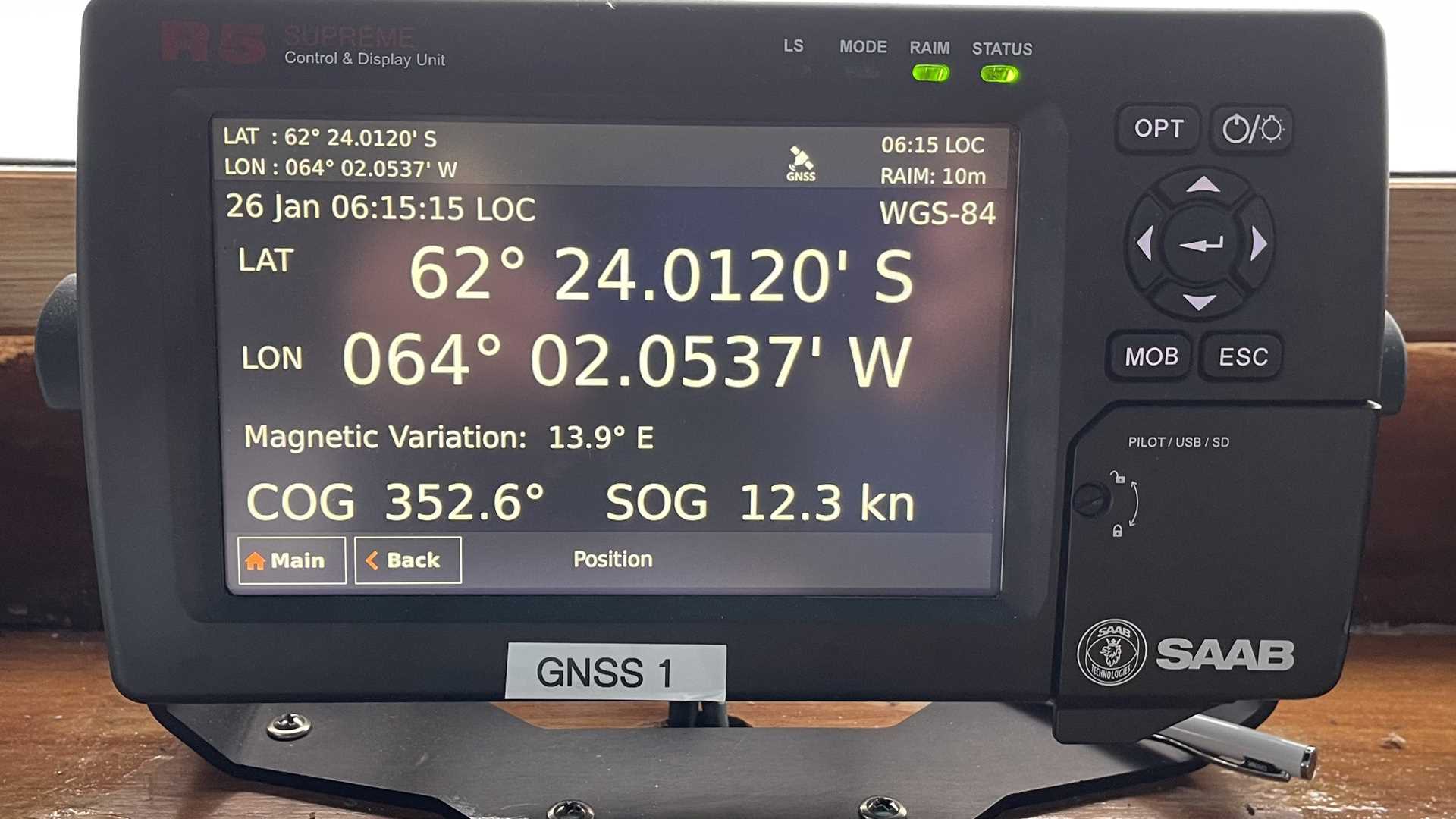After dinner last night, we left the shelter of the islands of the Antarctic Peninsula and pointed our bow northwards and into the notorious Drake Passage. The great Southern Ocean that encircles the continent was surprisingly benign — rocking us to sleep on a rhythmic swell.
When we woke this morning, dawn brought gray skies with good visibility, inspiring thoughts of seabirds and perhaps even more whale sightings during our journey. During the first of two days at sea, our milestones were essentially invisible though nonetheless significant. By 04:00, we had reached the “drop off,” the point at which we passed from the relatively shallow waters (just a few hundred meters deep) of the coastal Antarctic continental shelf to deep ocean waters at some 3,000 meters or so deep. This zone of upwellings frequently attracts cetaceans, though because of the timing, few were on deck to search for them. Later in the evening, much later, we reached the famous convergence zone. This is another rich region where the colder water closer to Antarctica mixes with slightly warmer water from further north. In a matter of a few tens of nautical miles, the sea water temperature rises by several degrees from just about 1°C (about 34°F) to a relatively balmy 4–5°C (about 40°F). This zone is also rich with high marine biodiversity that attracts various seabirds, including albatrosses, prions, and petrels.
Our day at sea was an opportunity to read, relax, further our education, and catch up with our journaling and photo editing. We had time to reflect on the many amazing sights and encounters during a voyage that has included some fabulous sightings of several whale species (fin, humpback, blue, and orca) and five penguin species (Magellanic, gentoo, chinstrap, Adelie, and emperor).
There was plenty of time to relax, yet the day also involved various engaging talks and, of course, our daily recap at cocktail hour. Mid and late morning were spent in an extended discussion of global climate change impacts and climate change solutions with stimulating contributions from numerous guests and several staff. After lunch, our education program continued with fascinating presentations by naturalists. Rory Mulloy presented on the amazing submarine forests of Antarctica, describing the role of marine macroalgae. Kim Nesbitt spoke on “Little Critters, Big Impact,” focusing on the significance of three particular organisms in Antarctica: krill, silverfish, and salps.
We rounded out our day with recap, dinner, and a discussion about Antarctica by several of our staff members who have spent prolonged periods on the continent, some who even over-wintered.







